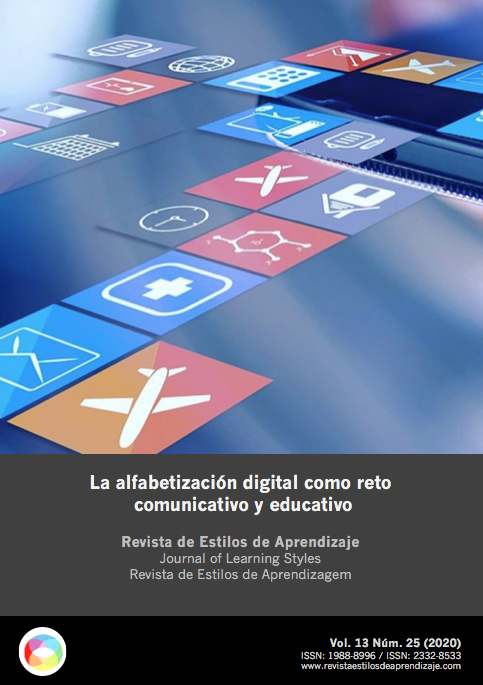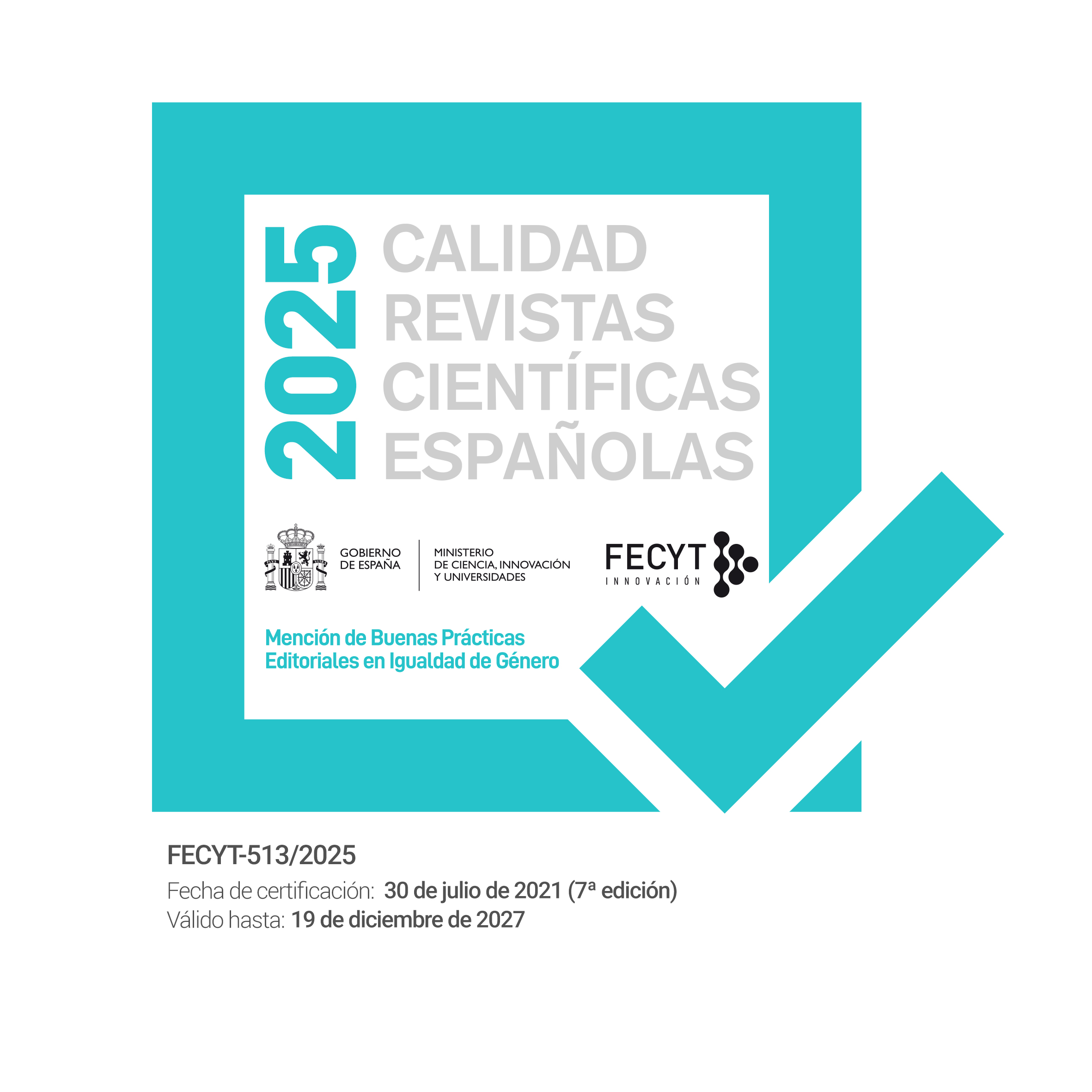Disinformation and fact-checking in the Argentine elections of 2019 The case of the Reverso initiative
DOI:
https://doi.org/10.55777/rea.v13i26.2161Keywords:
Argentina, Elections, Misinformation, Fact-Checking, Distribution ChannelsAbstract
The aim of this research is to study the processes of disinformation that circulated during the presidential elections held in Argentina on 27 October 2019. These elections were presented as an interesting case study in which the candidates Mauricio Macri and Alberto Fernandez disputed the government in the midst of the country's economic crisis and with the society divided. Disinformation strategies were a fact, despite the fact that in May press associations, digital platforms and political parties signed an agreement to fight false news on social networks. The research presented here examines the role of Reverso - an initiative promoted and coordinated by Chequeado, AFP Factual, First Draft and Pop-Up Newsroom - in which more than 120 media and technology companies joined together to combat disinformation during the electoral process. The results of this study include a proposal for a typology of hoaxes and denials that were circulated, as well as the identification of the preferential distribution channels for this false information.
Downloads
References
Alcántara Sáez, M. (2002). Experimentos de democracia interna. Las primarias de partidos en América Latina. (Working Paper, Kellogg Institute for International studies). Recuperado de: https://kellogg.nd.edu/sites/default/files/old_files/documents/293_0.pdf
Alconada Mon, H. (1 abril, 2019). ¿Cómo combatir las informaciones falsas durante las elecciones en Argentina? The New York Times Edición en español. Recuperado de: https://www.nytimes.com/es/2019/04/01/fake-news-argentina-macri-cristina/
Alconada Mon, H. (20 septiembre, 2019). Cambridge Analytica hizo trabajos para el Pro antes de la campaña de 2015. La Nación. Recuperado de: https://www.lanacion.com.ar/politica/cambridge-analytica-hizo-trabajos-pro-antes-campana-nid2289827
Allcott, H, Gentzkow, M (2017). Social media and fake news in the 2016 election. Journal of Economic Perspectives 31(2), 211–236. Recuperado de: https://www.nber.org/papers/w23089
Bae, P., Lüders, M., Spangenberg, J., Rath-Wiggins, L., y Følstad, A. (2015). Emerging journalistic verification practices concerning social media. Journalism Practice, 10(3), 323-342. https://doi.org/10.1080/17512786.2015.1020331
Bardín, L. (1986). El análisis de contenido. Madrid: Akal.
Benkler, Y, Faris, R, Roberts, H (2018) Network Propaganda. New York: Oxford University Press.
Berelson, B. (1952). Content Analysis in Comunication Research. Glencoe: Free Press.
Carballo, M. (11 julio, 2019). El impacto de las fake news en campaña electoral. Clarín. Recuperado de: https://www.clarin.com/opinion/impacto-fake-news-campana-electoral_0_6j17dVOY0.html
Clavero, J. (2018). Posverdad y exposición selectiva a fake news. Algunos ejemplos concretos de Argentina. Contratexto: revista de la Facultad de Comunicación de la Universidad de Lima, pp. 167-180. Recuperado de: http://dx.doi.org/10.26439/contratexto2018.n029.1857
Clayton, K., Blair, S., Busam, J. A., Forstner, S., Glance, J., Green, G., Kawata, A., Kovvuri, A., Martin, J., Morgan, E., Sandhu, M., Sang, R., Scholz-Bright, R., Welch, A. T., Wolff, A. G., Zhou, A., y Nyhan, B. (2019). Real Solutions for Fake News? Measuring the Effectiveness of General Warnings and Fact-Check Tags in Reducing Belief in False Stories on Social Media, Political behaviour. Recuperado de: https://doi.org/10.1007/s11109-019-09533-0
De Vita, P. (2019): El impacto de las fake news: qué sabemos y qué podemos aprender. Argentinaelections.com. Recuperado de: https://info-lab.org.ar/images/pdf/Fake_news_y_estado_democrtico.pdfhttp://www.argentinaelections.com/2019/05/el-impacto-de-las-fake-news-que-sabemos-y-que-podemos-aprender/
Di Iorio, A. H., Constanzo, B., Fernández, J., Lasia, S., Rothenburg, W. C. y Stroppa, T. (2019). Fake News y Estado Democrático: análisis de proyectos de ley y de las medidas que vienen siendo tomadas en Brasil y Argentina. Info-Lab. Recuperado de: https://info-lab.org.ar/images/pdf/Fake_news_y_estado_democrtico.pdf
González, E. (2019b). Cristina Kirschner, tótem y tabú. El País. Recuperado de: https://elpais.com/internacional/2019/06/01/argentina/1559424716_539747.html
Guevara, C. F. (5 junio, 2019): ¿Por qué Macri cambia el sistema electoral en Argentina? Infolibre. Recuperado de: http://infolibre.com.ar/por-que-macri-cambia-el-sistema-electoral-en-argentina/
Humprecht, E. (2019). How Do They Debunk “Fake News”? A Cross-National Comparison of Transparency in Fact Checks. Digital Journalism, Recuperado de: https://doi.org/10.1080/21670811.2019.1691031
Igartua, J. J. (2006). Métodos cuantitativos de investigación en comunicación. Barcelona: Bosch.
Krippendorff, K. (2002). Metodología de análisis de contenido: Teoría y práctica. Barcelona: Paidós.
Levi, S (dir.) (2019): #FAKE YOU. Fake news y desinformación. Barcelona: Editorial Rayo Verde.
LPO (23 julio, 2015). Las encuestas que obligaron a Macri a cambiar su discurso. La Política Online. Recuperado de http://www.lapoliticaonline.com/nota/90991/
Lustig, C., Olego, F., y Olego, T. (2018). Campañas y medios en democracias en desarrollo. Efectos del primer debate presidencial en la elección argentina de 2015. Revista mexicana de opinión pública, (24), pp. 95-111. Recuperado de: https://dx.doi.org/10.22201/fcpys.24484911e.2018.24.61606
Natanson, J. (2018). Mauricio Macri en su ratonera. El fin de la utopía gradualista. Nueva sociedad, 276. pp. 24-33. Recuperado de: https://nuso.org/media/articles/downloads/COY3_Natanson_276.pdf
Nyhan, B. y Jason, R. (2019). The roles of information deficits and identity threat in the prevalence of misperceptions. Journal of Elections, Public Opinion and Parties, 29 (2), pp. 222-244. Recuperado de: https://doi.org/10.1080/17457289.2018.1465061
Observatorio Electoral Argentino (25 noviembre, 2015). ¿Adónde fueron los votos entre la primera y la segunda vuelta electoral presidencial? Recuperado de: https://oear.cippec.org/novedades/ballotage-2015-mira-adonde-fueron-los-votos-de-la-primer-a-la-segunda-vuelta-electoral/
Pérez Hernández, A. F, Méndez Sánchez, C. J., Pérez Arellano, P., e Yris Whizar, H. M. (2019). Los estilos de aprendizaje como estrategia para la enseñanza en educación superior. Revista de estilos de aprendizaje, 12 (23), pp. 96-122. Recuperado de: http://revistaestilosdeaprendizaje.com/article/view/1212
Salmon, C. (2008). Storytelling, la máquina de fabricar historias y formatear las mentes. Barcelona: Península.
Selser, J. (6 junio, 2019). El principio del fin de las fakes news en la Argentina. La Prensa. Recuperado de: http://www.laprensa.com.ar/477267-El-principio-del-fin-de-las-fakes-news-en-la-Argentina.note.aspx
Shao, C., Ciampaglia, G. L., Varol, O., Yang, K-C., Flammini, A., y Menczer, F. (2018). The spread of low-credibility content by social bots. Nature Communications, 9(1), 4787. https://doi.org/10.1038/s41467-018-06930-7
Silva Sprock, A. (2018). Conceptualización de los Modelos de Estilos de Aprendizaje. Revista de estilos de aprendizaje, 11(21). Recuperado de http://revistaestilosdeaprendizaje.com/article/view/1088
Slimovich, A. (2017). La ruta digital a la presidencia argentina. Un análisis político e hipermediático de los discursos de Mauricio Macri en las redes sociales. Dixit. 26. pp. 24-43. Recuperado de: https://dialnet.unirioja.es/servlet/articulo?codigo=6124760
Smith, R. (25 octubre, 2019). How disinformation has plagued the Argentine and Uruguayan elections. First Draft. Recuperado de: https://firstdraftnews.org/latest/how-disinformation-has-plagued-the-argentine-and-uruguayan-elections/
Struminger, B. (9 abril, 2019). La cocina de las fake news: así se fabrican las noticias falsas en campaña. La Nación. Recuperado de: https://www.lanacion.com.ar/politica/la-cocina-fake-news-asi-se-fabrican-nid2234829
Valente, M. (23 julio, 2018). Un fraude electoral acorrala a Macri. La Voz de Galicia. Recuperado de: https://www.lavozdegalicia.es/noticia/internacional/2018/07/23/fraude-electoral-acorrala-macri/0003_201807G23P19991.htm
Vázquez-Herrero, J. Vizoso, A.; López-García, X. (2019). Innovación tecnológica y comunicativa para combatir la desinformación: 135 experiencias para un cambio de rumbo. El profesional de la información, v. 28, n. 3, e280301. https://doi.org/10.3145/epi.2019.may.01
Von Nordheim, G., Boczek, K., y Koppers, L. (2018). Sourcing the Sources: An analysis of the use of Twitter and Facebook as a journalistic source over 10 years in The New York Times, The Guardian, and Süddeutsche Zeitung. Digital Journalism, 6(7), pp. 807–828. https://doi.org/10.1080/21670811.2018.1490658
Waisbord, S. (2018). The Elective Affinity between Post-Truth Communication and Populist Politics. Communication Research and Practice, 4(1), pp. 17-34. Recuperado de: https://doi.org/10.1080/22041451.2018.1428928
Webfoundation (22 abril, 2018). La mano invisible: el newsfeed de Facebook y nuestra dieta informativa. Recuperado de: https://webfoundation.org/docs/2018/04/WF_ICC_Spanish_Screen_V2.pdf
XNet (2019): #FakeYou. Fake News y desinformación. Barcelona: Editorial Rayo Verde
Downloads
Published
How to Cite
Issue
Section
License
By submitting the original, the author(s) declare that they are aware of and accept, in full, the privacy policy as well as the copyright of the Learning Styles Magazine.
The Learning Styles Magazine offers free and open access to its content, completely free of charge, in order to bring scientific research to its readers and society in general. All digital contents are free and open access and are published under a Creative Commons license:

Rights are granted under the Creative Commons Reconocimiento-NoComercial-SinObraDerivada 4.0 Internacional (CC-BY-NC-ND 4.0)
The Learning Styles Magazine is an open access journal. Publication of articles or reviews in the Journal does not entitle you to any remuneration. For authors as well as readers, the journal is free Creative Commons Reconocimiento-NoComercial-SinObraDerivada 4.0 Internacional (CC-BY-NC-ND 4.0).
With this licence, the reproduction and dissemination of the contents of the magazine for educational, social and knowledge transmission purposes is permitted, without any profit motive in mind, provided that the source and authorship are not modified. The licence granted to Learning Styles Magazine allows the copying and distribution of the magazine's contents, as long as the authorship of the work is recognised, correctly specifying the author and the publishing entity. The work may not be used for commercial purposes, nor may it be altered, transformed or generated from this work.
The publication of articles or reviews in the Journal does not give the right to any remuneration.
The Learning Styles Journal invites the author/authors to increase the visibility and scope of their articles published by re-disseminating them in:
- Web spaces and personal networks, as well as in scientific meetings and forums
- Open institutional archives in Universities, educational repositories and Research Centres.
- Academic and scientific networks (Researchgate, Academia.edu, Plubons, etc.)
All these spaces and publications must include all the bibliographic data of the publication.

























